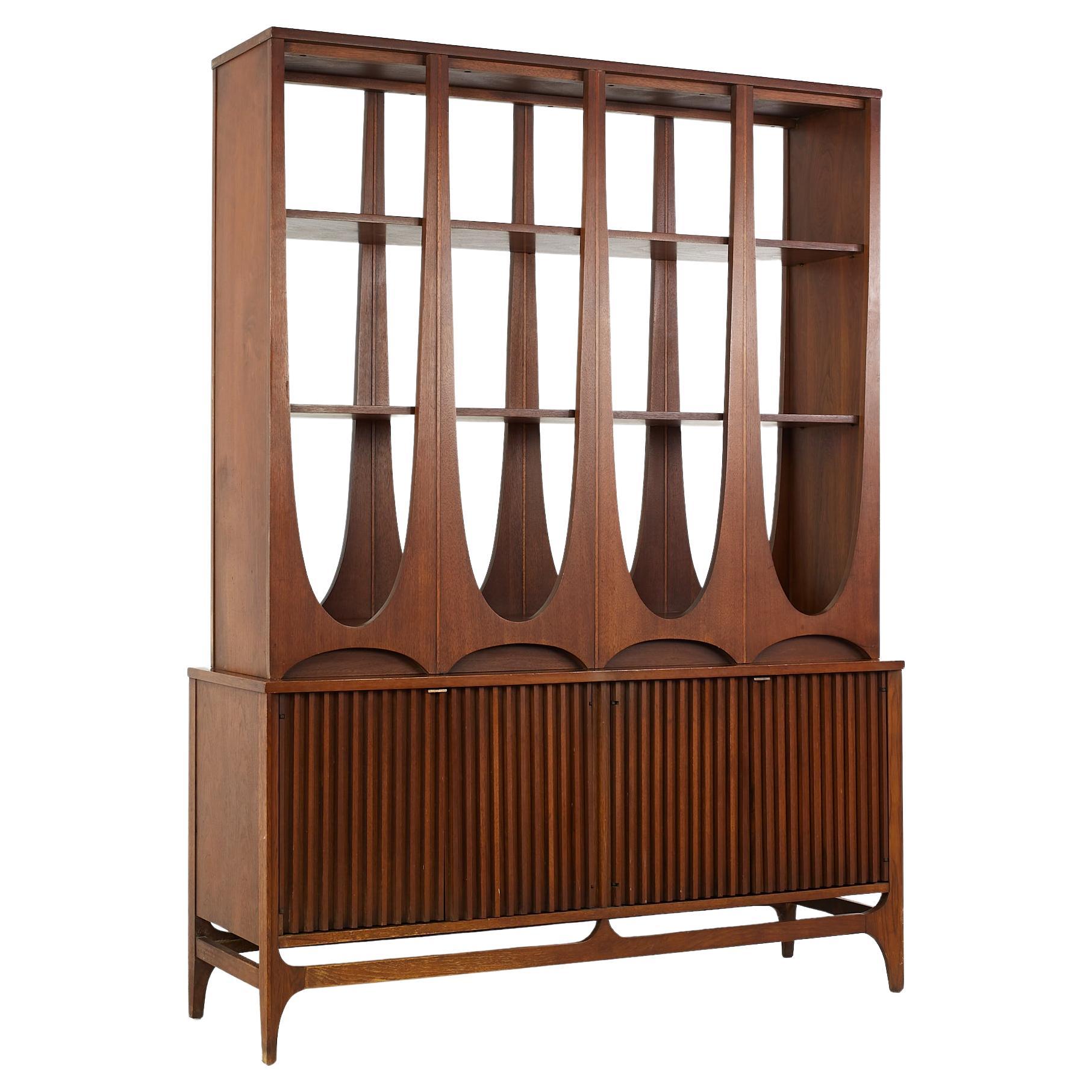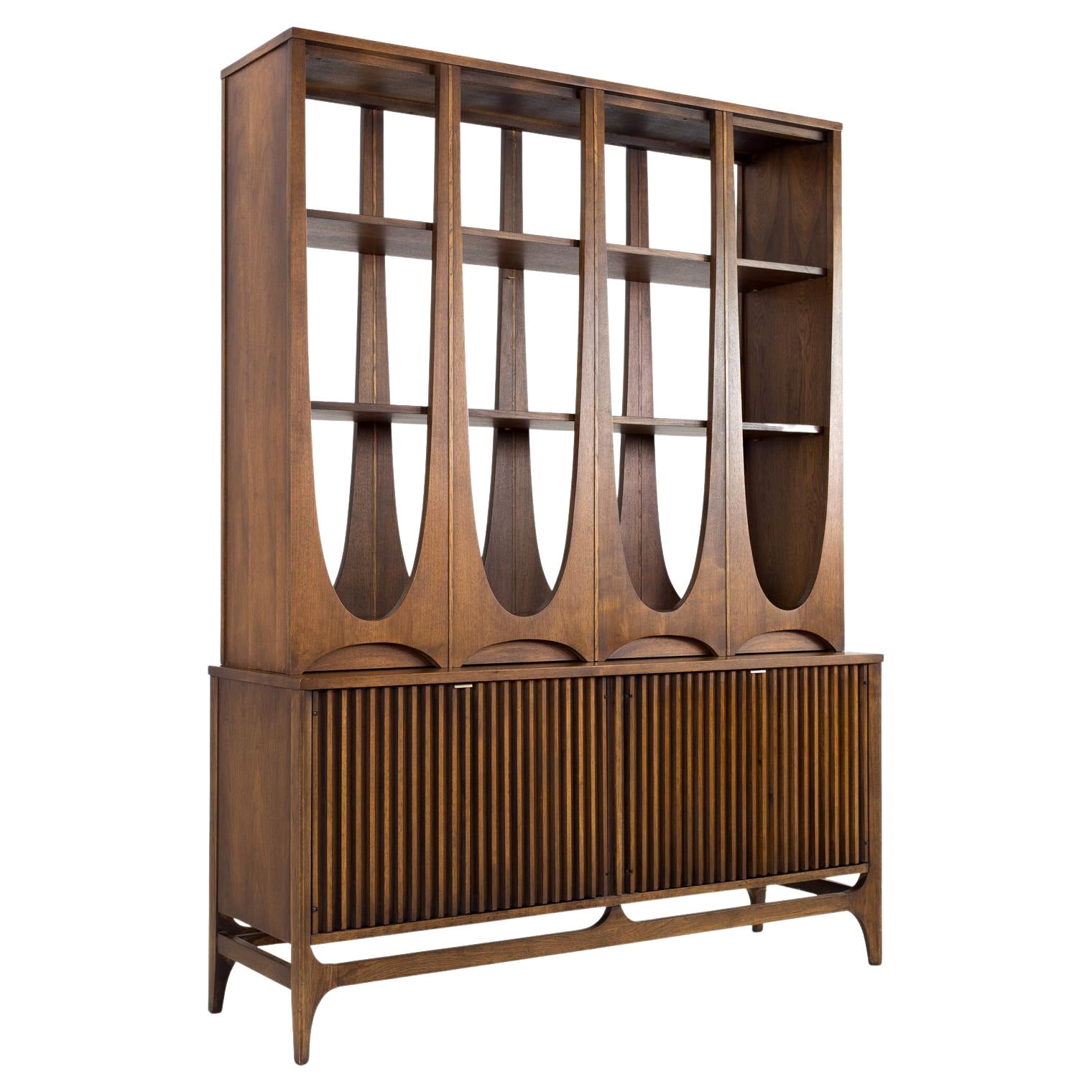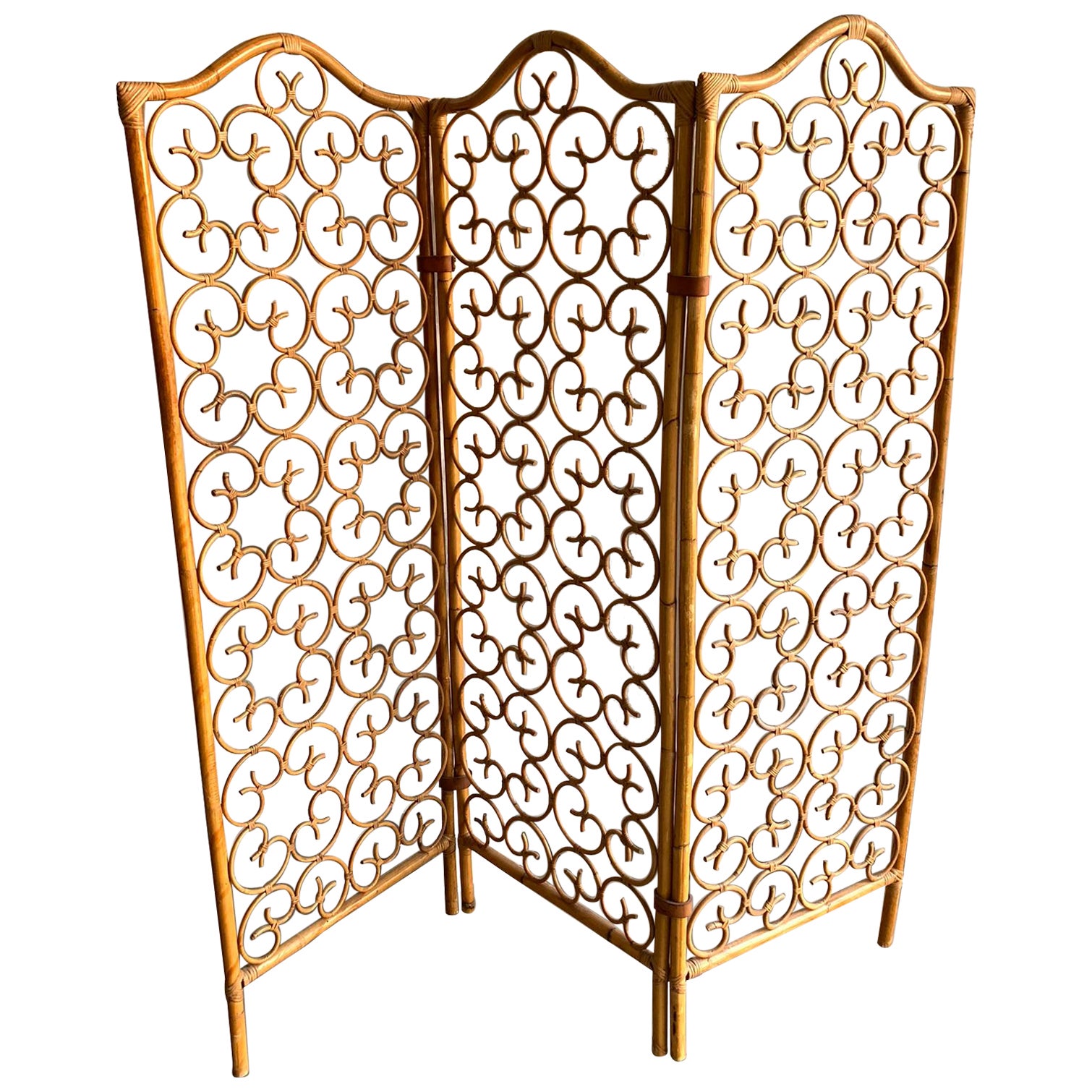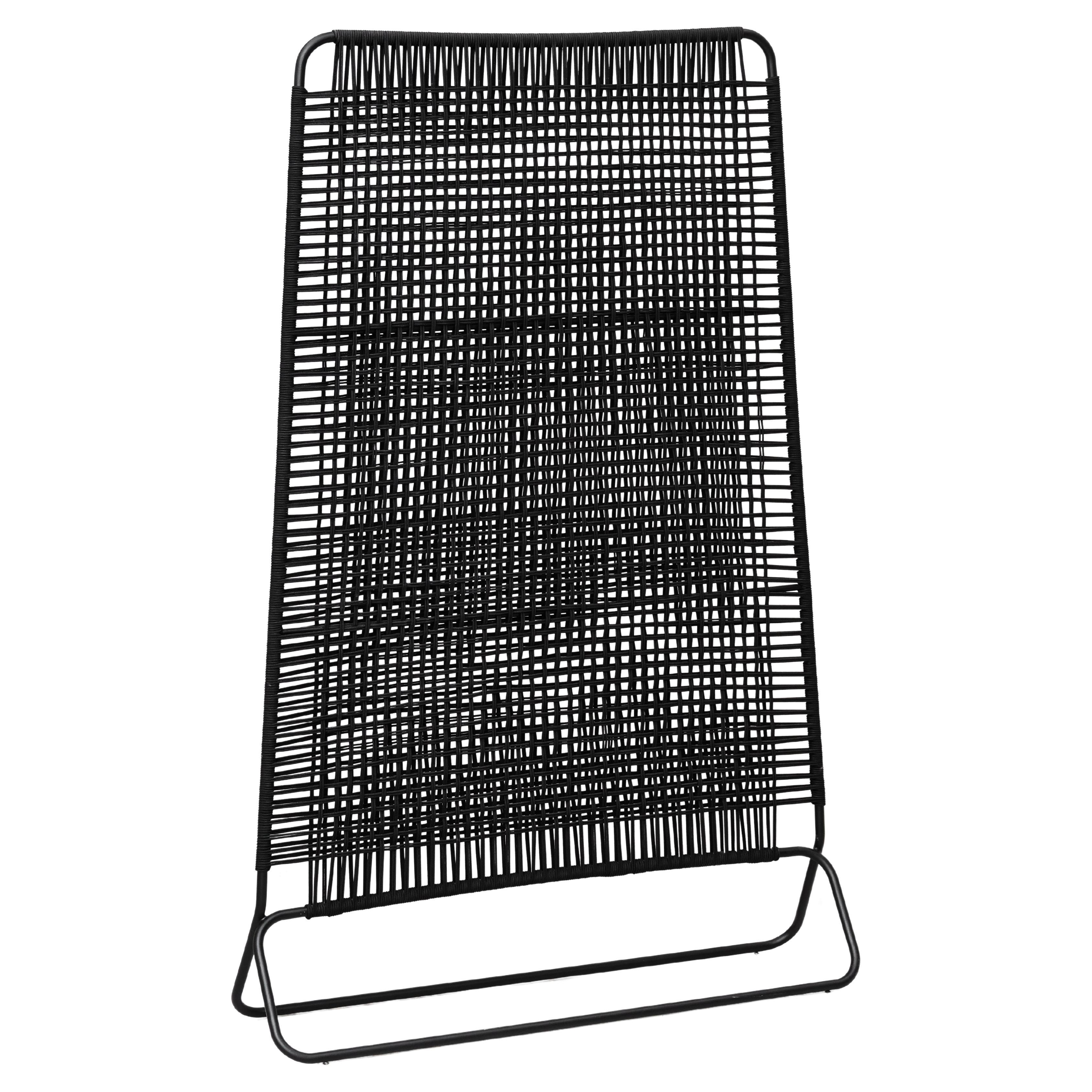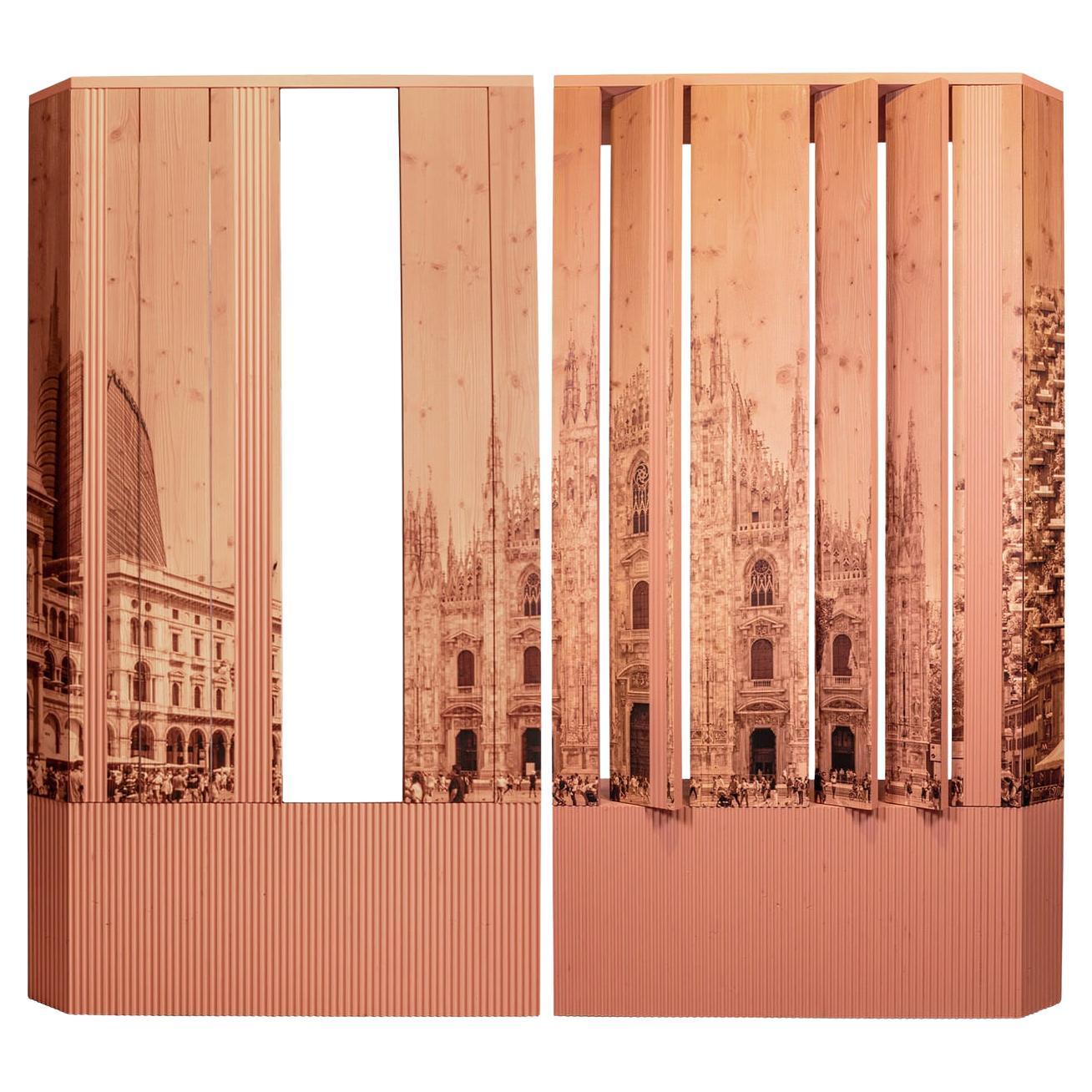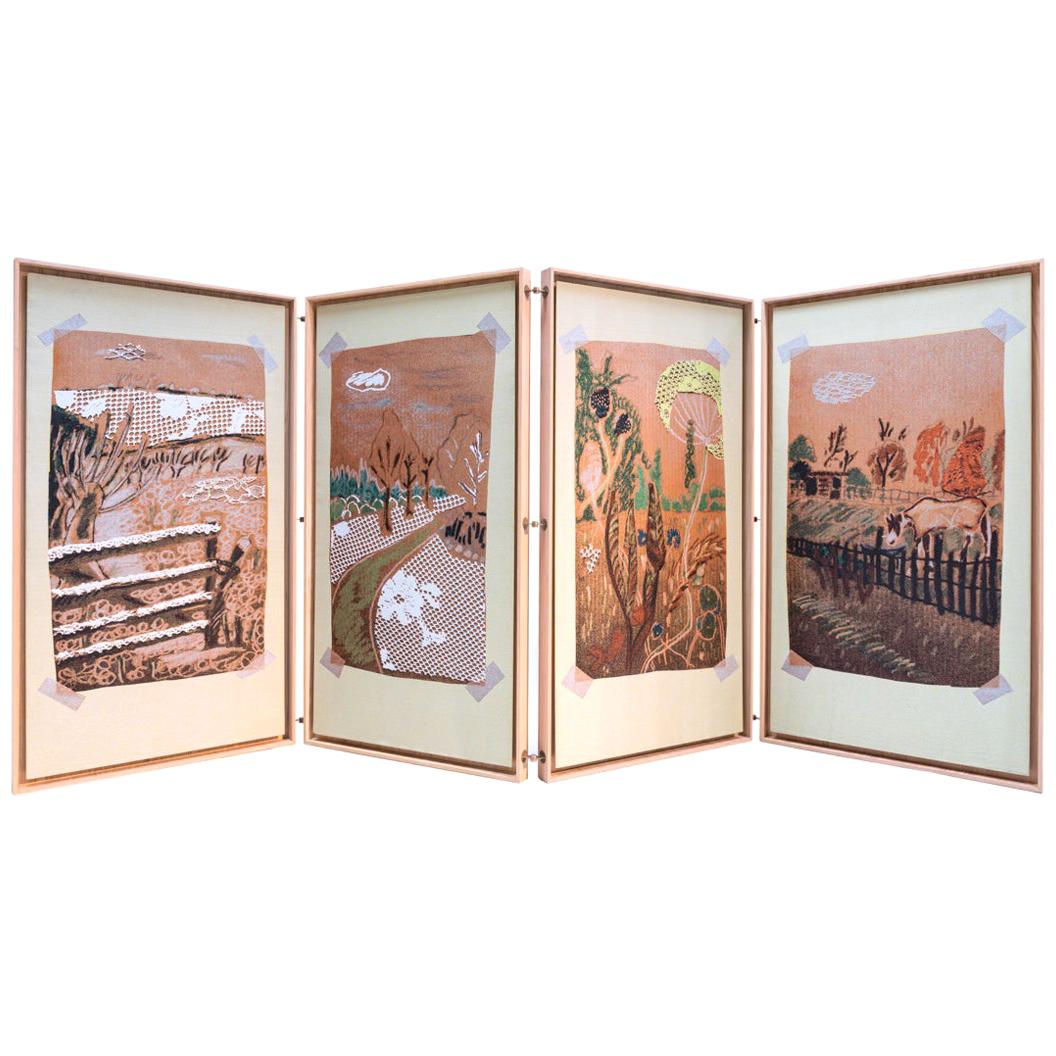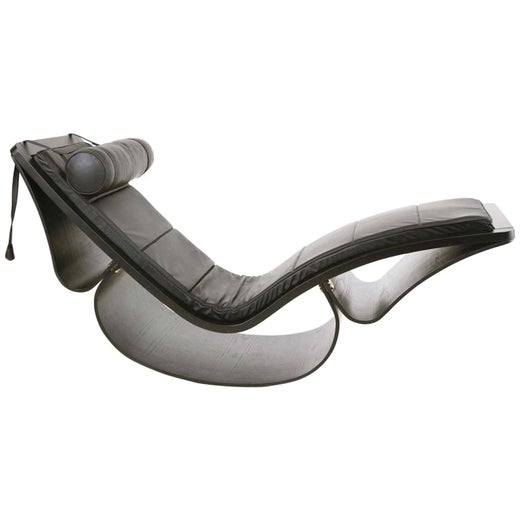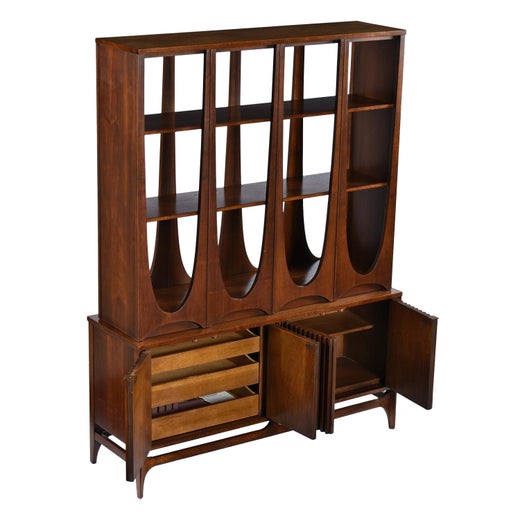Broyhill Brasilia Room Divider
About the Item
- Creator:Oscar Niemeyer (Designer),Broyhill Brasilia (Maker)
- Dimensions:Height: 72.75 in (184.79 cm)Width: 54 in (137.16 cm)Depth: 17 in (43.18 cm)
- Style:Mid-Century Modern (In the Style Of)
- Materials and Techniques:
- Place of Origin:
- Period:
- Date of Manufacture:1960s
- Condition:Refinished. Wear consistent with age and use. Excellent restored vintage condition with only minor, age appropriate imperfections (see pics). Credenza top section has been professionally refinished by our in-house cabinet shop. Detailed top to bottom, inside and out.
- Seller Location:Chattanooga, TN
- Reference Number:1stDibs: LU2255334459192
Oscar Niemeyer
Oscar Niemeyer made modernist architecture sexy. In his signature designs, such as those for the planned capital city of Brasília, Niemeyer created a distinctively buoyant architectural vocabulary of sweeping curves, flowing lines and organic forms (attributes that also characterize his seductive furniture). As expressions of faith in the power of modern architecture and design to foster progress, Niemeyer’s buildings have a kind of heroic poetry.
Oscar Ribeiro de Almeida Niemeyer Soares Filho was born to an upper-middle-class family in Rio de Janeiro. (His father was a graphic designer.) While in graduate school, Niemeyer began working for Lúcio Costa, one of the few modernist architects working in Brazil in the 1930s. Niemeyer would be assigned to the design team for a new building in Rio for the Ministry of Education and Health. The famed Swiss-born French architect Le Corbusier was hired as a consultant on the project, and through him Niemeyer would absorb many lessons in bringing a sense of structural lightness to large buildings — though he would never embrace the geometric forms espoused by Le Corbusier and the members of the Bauhaus.
“I am not attracted to straight angles or to the straight line, hard and inflexible, created by man,” Niemeyer would write in his memoirs. “I am attracted to free-flowing sensual curves.”
Nowhere would Niemeyer demonstrate his love of curvature more expressively and elegantly than in his designs for the principal buildings for Brasília, a project begun in 1956. The dramatic Congressional Palace features two stark towers flanked by a domed structure and a bowl-shaped edifice, for the upper and lower legislative houses. He placed the Palácio da Alvorada (the presidential residence) on a small peninsula jutting into a lake, so that the sequence of parabolic columns on its facade casts a mirror image on the water. Niemeyer’s grandest achievement was the city’s cathedral, a stunning composition of 16 arched vertical supports with tinted-glass interstices.
Four years after Brasília was completed, in 1960, Brazil’s elected government was overthrown in a military coup. Niemeyer, a member of the Communist party, was harassed continually by the junta. He left the country and did not return until democracy was restored, in 1985.
While in exile, in the early 1970s, Niemeyer began collaborating on furniture designs with his daughter, Anna Maria Niemeyer. Their best known pieces are seating furniture — the Alta lounge chair and ottoman and the Rio rocking chaise, which have flowing bases made of sheets of lacquered wood or stainless steel, share the aesthetics of Niemeyer’s architecture.
The Alta’s deep, oversized seat pads nod — much like the chair designs of Niemeyer’s countryman Sergio Rodrigues — to the Brazilian penchant for long, languorous conversations. Examples of both designs are priced at about $20,000, depending on age, condition and materials. As you will see on these pages, Oscar Niemeyer’s furniture designs are sleek, sculptural, comfortable and elegant — as well as a compact emblem of the work of one of the great architects of our time.
Find vintage Oscar Niemeyer lounge chairs, tables and other furniture on 1stDibs.
Broyhill Brasilia
No other American mid-century furniture line has become as synonymous with a certain type of curvilinear decoration as Broyhill’s Brasilia group. While its revered cabinets, dressers, dining chairs and more were made in the United States, the inspiration for the distinguishing characteristics of vintage Broyhill Brasilia furniture can actually be found in Latin American architecture.
Broyhill Furniture Industries was launched in Lenoir, North Carolina by brothers Thomas H. and James Edgar “Ed” Broyhill. Ed had been working for his brother’s furniture manufacturing company, the Lenoir Furniture Corporation, which produced bedroom furnishings in the 1920s, when a nearby supplier’s factory, Bernhardt Chair Company, burned in a fire. Ed founded Lenoir Chair Company and expanded its operations while remaining an employee at Lenoir Furniture Corporation. He subsequently partnered with Thomas and together they purchased Harper Furniture Company, a local producer of Colonial Revival-style furniture, in 1929. By the 1940s, Broyhill Furniture Industries had absorbed more factories and gained footing as a strong competitor of Lenoir’s Kent-Coffey Manufacturing Company and a rebuilt Bernhardt Furniture.
In the mid-1950s, responding to changing tastes and to an appetite for what is now universally known as mid-century modern furnishings, the firm launched its Broyhill Premier line with the Sculptra series. Sculptra pieces featured a square-within-a-square motif and horizontal cat’s-eye-shaped drawer pulls. Later, in 1962, the Broyhill Brasilia furniture group debuted at the Seattle World’s Fair. The collection was heavily inspired by Oscar Niemeyer’s modernist buildings for the eponymous Brazilian capital.
Designed and built by Niemeyer between 1956 and 1960, the modernist architecture of Brasília’s state capitol buildings have since taken on iconic status. The elegant curves of Niemeyer's works — those that characterize the white concrete structures that encase Palácio do Planalto in addition to the fluid inverted arches of the Supreme Federal Court Building — can be seen in the pronounced decorative elements that adorn the Broyhill Brasilia group’s sleek walnut highboy dressers, specifically in their striking brass drawer-pull arches and carved moldings. While considerably popular during the 1960s, the production of the Brasilia line — with its beloved two-tiered bedside tables and tasteful credenzas — was discontinued in 1970.
On 1stDibs, browse mid-century Broyhill Brasilia furniture, such as walnut dressers, dining chairs, case pieces and more.
- ShippingRetrieving quote...Ships From: Chattanooga, TN
- Return PolicyA return for this item may be initiated within 7 days of delivery.
- 1958 Danish Teak Hutch Bar Credenza by Hans Wegner for Ry MøblerBy Ry Møbler, Hans J. Wegner, Arne VodderLocated in Chattanooga, TNBorn on April 22nd in 1958, this free-standing wall-unit / hutch is truly an architectural masterpiece. The entire construction can be easily broken down and assembled without any h...Category
Vintage 1950s Danish Mid-Century Modern Credenzas
MaterialsTeak, Pine
- Maitland Smith Hand Painted Neoclassical 4-Panel Folding Screen Room DividerBy Maitland SmithLocated in Chattanooga, TNOpulent, large scale, Maitland Smith hand-painted room divider folding screen. The Greco-Roman themed folding screen features neoclassical architecture and sculpture as decadent as the halls of the Roman Senate. Each of the four panels measures 34″ wide! The screen stands at 8 feet tall. The palatial scene could easily be used as theatrical backdrop...Category
1990s Philippine Hollywood Regency Screens and Room Dividers
MaterialsCanvas, Hardwood
- Raymond Loewy Inspired Yellow Chapter One Dresser by Broyhill PremierBy Raymond Loewy, BroyhillLocated in Chattanooga, TNTwo identical dressers are available. They are listed and sold individually. Please inquire if you are only interested in both Well it’s 2023, and Broyhill’s Chapter One Collection is officially harder to find and more sought after than the Raymond Loewy orginals. With all due respect to Raymond Loewy, there really is something magical about the Chapter One line. Maybe they’re just more fun and approachable. Maybe it’s the proportions and practicality. Regardless, they’re one of our favourite collections of all time. The restoration team pulled no punches on this Chapter One Yellow Dresser...Category
Vintage 1970s American Mid-Century Modern Credenzas
MaterialsPlastic, Hardwood
- Pair of Raymond Loewy Inspired Yellow Chapter One Dressers by Broyhill PremierBy Raymond Loewy, BroyhillLocated in Chattanooga, TNListed and sold as a pair. Please inquire if you are only interested in one. Well it’s 2023, and Broyhill’s Chapter One Collection is officially harder to find and more sought after than the Raymond Loewy orginals. With all due respect to Raymond Loewy, there really is something magical about the Chapter One line. Maybe they’re just more fun and approachable. Maybe it’s the proportions and practicality. Regardless, they’re one of our favourite collections of all time. The restoration team pulled no punches on this set of Chapter One Yellow Dressers...Category
Vintage 1970s American Space Age Credenzas
MaterialsPlastic, Hardwood
- Vintage Restored Solid Maple Heywood Wakefield Wheat Credenza BuffetBy Heywood-Wakefield Co.Located in Chattanooga, TNVersatility abounds with this Heywood Wakefield credenza. Buffet, media cabinet, or entryway console are just a few ideas. As a dry bar, the adjustable / removable shelves will allow you to keep that whiskey collection cozy. The top drawer sports the original felt and dividers that can also be removed to suit your needs. Collectors know that it is difficult to find original Heywood in good condition. The fair color wood typically shows all the flaws of half century of use. You’ll be delighted to know that this credenza has been mostly restored. The Heywood finishes are among the most challenging to replicate. We are pleased to say that we have achieved a a near perfect muted grain and color match to the the original Heywood Wakefield wheat...Category
Vintage 1960s American Mid-Century Modern Credenzas
MaterialsMaple
- 1950's Custom Made Mid-Century Modern Glass Door Mahogany Rosewood CredenzaBy Brown Saltman, Jens Risom, Foster-McDavid, Arne VodderLocated in Chattanooga, TNPictures don't this piece justice. The mahogany (possibly Mindoro) shimmers and gleams with an almost indescribable Iridescence that looks like rivers of honey that form the ebbing a...Category
Vintage 1950s American Mid-Century Modern Credenzas
MaterialsMahogany, Glass, Rosewood
- Broyhill Brasilia Mid Century Walnut Room DividerBy Broyhill BrasiliaLocated in Countryside, ILBroyhill Brasilia Mid Century Walnut Room Divider The credenza bottom measures: 54 wide x 17 deep x 27 inches high The top shelving measures: 52 wide x 13 deep x 46 inches high The ...Category
Vintage 1970s American Mid-Century Modern Screens and Room Dividers
MaterialsWalnut
- Broyhill Brasilia Mid Century Room Divider Wall Unit ShelvingBy Broyhill BrasiliaLocated in Countryside, ILBroyhill Brasilia Mid Century Room Divider Wall Unit Shelving This wall unit measures: 54 wide x 17 deep x 72.5 inches high The base measures:...Category
Vintage 1970s American Mid-Century Modern Shelves and Wall Cabinets
MaterialsWood
- Room DividerLocated in Hellerup, DKVintage 1960s French bamboo three fold room divider or screen.Category
Vintage 1960s French Screens and Room Dividers
MaterialsBamboo
- Penca Room DividerBy Torres + HanhausenLocated in Ciudad de México, MXPenca is a line of outdoor furniture with a strong Mexican identity, designed for residential spaces as well as for common areas of restaurants or boutique hotels. The concept of the...Category
2010s Mexican Modern Screens and Room Dividers
MaterialsSteel
- Milano Room DividerBy BelvedereLocated in Milan, ITA painted wooden room divider whose apparently solid outer face opens up into louvre at a touch, almost disappearing. Each panel has two faces: the...Category
2010s Italian Modern Screens and Room Dividers
MaterialsWood
- Transition Room DividerBy Kiki & Joost, Kiki van EijkLocated in Eindhoven, NLThis poetic room divider has four textural panels echoing the change of seasons. The harmonious color scheme is striking in its simplicity and in the att...Category
21st Century and Contemporary Dutch Modern Screens and Room Dividers
MaterialsJacquard
